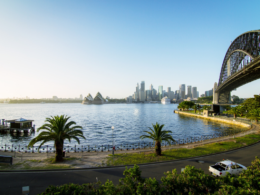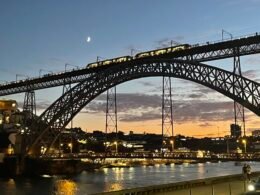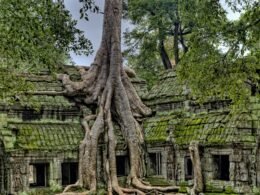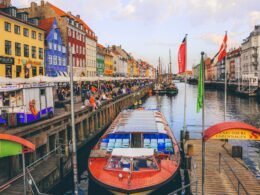Thanks to its stunning coastline, mountains, and dessert along with its vibrant cities and towns, Morocco is becoming an increasingly popular travel destination. Morocco has a mix of North African, Middle Eastern, and European influences that make it a unique place to visit.
There’s so much to see in this diverse country, so we’ve created a 7-day Morocco itinerary to help you see the best of Morocco in just one week.
You’ll begin your trip in Marrakech, the city most visited by tourists. Marrakech has an international airport where you can fly into Morocco and begin your adventure right away.
As you travel through Morocco, you can either use trains or hire private taxis to travel from one city to another. The trains are usually very comfortable, especially if you pay a little more for a first-class ticket. For places you can’t travel to by train, taxis/drivers are usually reasonable. Negotiate your fare in advance so there are no surprises when you arrive at your destination.
You can’t see everything in Morocco in one week, but with this itinerary, you’ll be able to see several of the highlights. Prepare to see exquisite architecture, explore one of Morocco’s national parks, drink lots of mint tea, and see one of the country’s most picturesque towns.
Day 1: Marrakech
Often called the Red City, Marrakech is one of Morocco’s four imperial cities and dates back to over 1000 years ago. The beautiful city has been drawing visitors to experience its culture, shops, and cuisine for a long time. You’ll dive into a world of extravagance architecture and historical sites alongside modern culture all moving at an impossibly fast pace.

What to do and see in Marrakech?
Marrakech is Morroco’s most popular city for tourists because there’s just so much to do and see here. The city’s pace may seem intimidating, but don’t let that stop you from hitting a few of the city’s biggest attractions on your first day in Morroco. Today, you’ll visit several of the most stunning architectural works in the city.
- Koutoubia Mosque – The largest mosque in Marrakesh, Koutoubia Mosque was constructed in the 12th century. The 250-foot high structure with its distinctive square design is the city’s most famous landmark. Non-Muslims can’t go inside, but everyone can admire the view and stroll through the gardens.
- Saadian Tombs – This extravagant tomb complex with imported Italian marble and pure gold gilding was built in the 16th century for Sultan Ahmed Al Mansour Ed Dahbi.
- Bahia Palace – Another eye-catching attraction, the palace was built in the 1860s by the Grand Vizier Si Moussa. It’s a stunning example of intricate craftsmanship from the era.
- Jemaa el-Fnaa – This historic square has been a meeting place in the heart of Marrakech for over a thousand years. Today, you’ll find restaurants lining the square, and in the evening, the market comes alive with stalls selling everything from orange juice to snails.
Where to eat in Marrakech?
In Marrakech, you’ll find lots of spots where you can try authentic Moroccan food that’s bursting with flavor. Try out Patisserie des Princes near Koutoubia for delicious pastries and Moroccan coffee. Cafe El Koutoubia is a good option for breakfast or lunch. For local dishes (including camel burgers) and live music, try out Cafe Clock near the Saadian Tombs
In the evening, eat at the food stalls in Jamaa el-Fnaa. If you can, grab a seat at one of the terraces overlooking the square.
Where to stay in Marrakech?
- $$$ – Riad Melhoun & Spa
- $$ – Riad Adika & Spa
- $ – Riad Matham
Related: The 15 Best Places To Visit In March: Worldwide
Day 2: Marrakech
On your second day in the Red City, you’ll head to a somewhat quieter part of the city.

What to do and see in Marrakesh?
- Jardin Majorelle – One of Morocco’s most visited attractions, this site includes gardens with more than 300 plant species and the Musée Berbère which showcases artifacts from the area’s indigenous populations.
- Ben Youssef Madrasa – An Saadian architectural masterpiece, this was once the largest Islamic college in Morocco. Today, this site draws visitors both for its historic significance and its impressive decor.
- Moroccan Hammam – Public hammams are found in every Marrakech neighborhood and are a central part of the culture. Tourists tend to head to luxury spa centers for a similar experience. Your riad may have its own hammam. If not, try the Rosa Bonheur hamman, Les Bains d’Orient, or the Heritage Spa.
Where to eat in Morocco?
Try out the trendy My Kawa near Jardin Majorelle for delicious salads and slices of quiche on a beautiful terrace. For excellent food in a cozy atmosphere, Atay Cafe Food is a great choice.
In the evening, try out Churchill Bar, a polished bar with old-world charm that was a favorite of Winston Churchill.
At some point during your trip, you’ll want to try Morocco’s famous mint tea. You’ll find the sweet beverage at restaurants, cafes, and bars across the city. If you want to enjoy mint tea in a tea house, try Tea Room Riad Yima, Tchaba Tea House, or Cafe Guerrab.
Day 3: Toubkal National Park (Imlil)
Travel time: 1 hour/a day trip.
Take a day trip or an overnight trip from Marrakech to Imlil, the starting point for the trek to Mount Toukbal, the highest peak in North Africa. Imlil is located in the Toubkal National Park, but you don’t need to be planning to hike Mount Toukbal to visit this traditional village. Instead, you can enjoy the cooler weather and check out the beautiful scenery.

What to do and see in Imlil?
The easiest way to see Imlil is to book a guided tour. However, if you’d rather explore on your own, it’s possible to take a taxi to Imlil and hire a guide there if needed.
If you decide to hike, you can hire a local guide to take you on a short hike. You can also take walks on your own as well. There’s a small waterfall that’s only a 30-minute walk from the town. You can also take the walking circuit to Aroumd. You’ll pass through several small towns on the way and be able to stop at several different viewpoints for photos.
Where to eat in Imlil?
Goat and lamb barbecues are some of the best food options in Imlil. You’ll also find shops selling basic foods like shawarma and pizza. If you stay in Imlil overnight, your accommodation will likely have excellent meal options available for you.
Where to stay in Imlil?
- $$$ – Kasbah Imlil
- $$ – Toubkal Ecolodge
- $ – Gîte Tamsoulte
Day 4: Casablanca
Travel time: 2.5-3 hours by high speed train.
Casablanca is arguably Morocco’s most famous city. It’s definitely the largest and most modern city. The atmosphere here is very different from what you’ll find in the rest of the country. On your first day in Casablanca, you’ll visit the city’s biggest tourist attractions.

What to do and see in Casablanca?
If you expect the Casablanca you’ve seen in the famous movie, that’s not what you’ll find in the crowded, modern city today. However, there’s still plenty to see in the city. Here are a few sites you can’t miss.
- Hassan II Mosque – An opulent mosque, this landmark is one of the largest mosques in Africa, and one of the two Moroccan mosques that non-Muslims can visit.
- Promenade Maritime de la Mosquée Hassan II – Stroll through this seafront promenade that reaches from the Hassan II Mosque to the El Hank lighthouse and enjoy its gardens, cafes, and views.
- Old Medina – The Old Medina is the best place to get a glimpse of local life in Casablanca. The area is full of shops and stalls with items both for tourists and locals. You can either hire a guide or explore on your own.
Where to eat in Casablanca?
While in the Old Medina, make a stop at nearby Bennis Habous to try some of the delicious pastries. Enjoy a traditional Moroccan meal at Resto Zayna. If you’re a fan of the movie Casablanca, visit Rick’s Cafe for a drink in the evening. While the movie wasn’t actually filmed here, the cafe is modeled after the one in the movie.
Where to stay in Casablanca?
- $$$ – Idou Anfa Hôtel & Spa
- $$ – Golden Star Casablanca
- $ – Hôtel Astrid
Further reading: The 10 Best Places To Visit In Morocco
Day 5: Casablanca
On your second day in Casablanca, you’ll have a chance to visit places where fewer tourists go. You’ll spend most of the day exploring the Habous quarter, a charming neighborhood with white French buildings and courtyards.

What to do and see in Casablanca?
Most tourists stick to visiting the Hassan II Mosque and a few other attractions. Since Casablanca isn’t the most visited city in Morocco, you’ll see more locals and fewer tourists here in general. Here are a few of the less visited sites in Casablanca that are still very much worth going to.
- Habous Quarter – The French influence in Morocco is most apparent in this part of the city. Today, you’ll find architecture that’s a blend of traditional Moroccan and French styles. The area is also home to artisans and shopkeepers. You’ll come across vendors selling produce, meats, and spices as well as pottery and handmade carpets.
- Royal Palace – While you can’t go inside, you can admire the view of the King’s grand palace in Morocco.
- Notre Dame de Lourdes Church – This is one of the city’s most beautiful churches. It’s one of only two Catholic churches in the city, and its intricate stained glass window was created by the famous French artist Gabriel Loire.
- Museum of Moroccan Judaism – Housed in a garden villa that was once a home for Jewish orphans, this museum was founded in 1997. The small museum is the only museum of Jewish life in the Arab world.
Where to eat in Casablanca?
Have lunch at Port de Pêche right in the middle of the port. The restaurant is always packed because it’s one of the best places in the city for fresh seafood. There are other great seafood restaurants around the port as well. If you’d like a traditional Moroccan experience, try Le Riad where you’ll find a simple, but tasty, traditional menu.
Day 6: Chefchaouen
Travel time: 3-5 hours. You can either get a private taxi/transfer, or fly to Tangier and get a transfer on from there, find out more on KimKim.
There are many beautiful places to visit in Morocco, but Chefchaouen tops the list as one of the most unique, beautiful cities. The city is called Morocco’s blue city thanks to its powder blue-hued buildings. After the busy cities of Marrakech and Casablanca, Chefchaouen is the perfect leisurely retreat.

What to do and see in Chefchaouen?
Obviously, you’ll want to spend time admiring the picturesque parts of this town. Here are a few of the best things to explore in Chefchaouen. Expect to see a fair number of tourists. Chefchaouen may be tiny, but it attracts many visitors.
- Medina – Chefchaouen’s medina has winding streets, inviting doorways, and popular plazas all in many shades of blue. You can easily spend hours just admiring the cute town.
- Plaza Uta El Hamman – The plaza in the center of the medina is lined with cafes and restaurants. The Grand Mosquée, built in the 15th century, dominates the plaza.
- Kasbah – The 15th-century kasbah in Chefchaouen houses a tranquil garden, a former prison, the Center for Research and Andalusian Studies, and the Portuguese tower.
Where to eat in Chefchaouen?
Chefchaouen may be a small town, but it has a surprising number of amazing restaurants. For lunch try out the Moroccan dishes at Casa Aladdin. Get a spot on the rooftop terrace to enjoy views of the Medina while you eat. If you’d rather eat in the Medina itself, there are several restaurants around the square that have great meals. Look for a restaurant that catches your eye and give it a try. At dinner, head to Beldi Bab Ssour. Order the tajine and the goat cheese and watch the sunset over the city during your meal.
Where to stay in Chefchaouen?
- $$$ – La Petite Chefchaouen
- $$ – Riad Gharnata
- $ – Hotel Souika
Earth Curious on the Middle East: 10 Things to See and Do in Muscat, Oman: A Local’s Guide
Day 7: Chefchaouen
On your second day in Chefchaouen, you’ll head out of town and take a hike. Depending on when and where your flight from Morocco leaves, you can choose a length and difficulty level that works for you. The closest airports nearby are Tetouan and Tangier.

What to do and see in Chefchaouen?
Chefchaouen is in the Rif Mountains in northwest Morocco. The surrounding area is beautiful and worth spending time exploring.
For a scenic hike with views of the city, hike to the Spanish Mosque a little over a mile from Chefchaouen. The mosque was built in the 1920s, but never actually used. Still, it’s worth visiting thanks to the incredible views from the hilltop. Plan to spend several hours hiking from Chefchaouen and exploring.
For a more intense hike, you can take the trail to Jeb al-Kalaa. The peak overlooks Chefchaouen and you’ll get amazing views, but you’ll need to be in decent shape to hike the 9-hour loop.
If you have enough time, consider visiting the nearby town of Akchour to hike to the Akchour Waterfalls and God’s Bridge. These popular trails are located in the Talassemtane National Park.
Where to eat in Chefchaouen?
If you have time on your last day, indulge in a few of Chefchaouen’s best foodie offerings. If you’re looking for Morocco’s staple mint tea, go to Mester Juices where you can enjoy your tea on the rooftop. You can also get freshly squeezed juice here. For delicious homemade falafel, try out Hamsa, a vegan-friendly cafe. For excellent local cuisine, stop at Auberge Dardara to try the goat tajine or bissara.
Useful tips for traveling in Morocco:
There’s so much to do and see in this incredible country. Many of its visitors have a lovely time and can’t wait to return in the future. To help make your trip to Morocco the best it can be, here are a few tips to keep in mind.
- Morocco is a conservative country, so dress appropriately. It’s generally best to keep your knees and shoulders covered. Women who are less covered up may draw unwanted attention. Keeping a large scarf or shawl that you can easily put on to cover up even more can be helpful at times.
- If you’re visiting during the summer, pack lightweight clothes made with breathable fabrics. You want to be able to cover up without being too hot. Make sure to bring sunglasses and wear sunscreen as well.
- Haggling is generally expected when shopping in markets. You’ll still likely pay more than the locals, but try to negotiate prices down rather than accepting the full price at first.
- Keep in mind that many shops will close on Fridays because it’s a holy day. There may also be other Muslim holidays when everything closes, so check when planning your trip.

The best time to visit Morocco:
The best time to visit Morocco depends on what you’d like to do there. The weather tends to be the best during March and April in the spring and during September and October in the fall.
July and August are the hottest months in Morocco, but they are also the months with the fewest crowds.
What is the currency of Morocco?
The currency in Morocco is the dirham. The exchange rate varies, but 1 Moroccan dirham roughly equals 1 United States dollar most of the time. Most major credit cards can be used in Morocco’s larger towns and ATMs are easily available in the cities as well as many large towns.
Can you drink tap water in Morocco?
The tap water in Morocco is generally considered safe and drinkable, especially in the cities. However, bottled water is also available and may be a better choice for those with sensitive stomachs.
The language of Morocco:
Moroccan Arabic (Darija) is the most commonly spoken language in the country. French is also spoken widely throughout the country and can be useful for tourists who don’t speak Arabic. In Northern Morocco, Spanish is more common than French. In larger cities, you’ll find a number of people who speak English.
A few useful phrases to use in Morocco:
- Saalam uwaleekum – Peace be upon you: Used as a greeting.
- Wa’aleekum salaam – And also on you: Used as a reply to Saalam uwaleekum.
- Aafek – Please: Always a useful word.
- Shukran – Thank you: Another one that should be used often.
- La Shukran – No Thank you: Comes in handy when you aren’t interested in buying something.
Is Morocco Safe?
Morocco is a relatively safe country for travelers who are aware of its laws and cultural customs. The violent crime rate is low, but tourists should be alert for scam artists and pickpockets.
Females traveling alone or with other females will encounter catcalling and other undesirable attention, often more than most females are used to encountering. Ignore the comments and avoid responding. You’re unlikely to face physical danger, but use common sense and listen to your instincts if something seems off.
Thought about Turkey before? 3 Days In Istanbul: The Best Itinerary
Final thoughts:
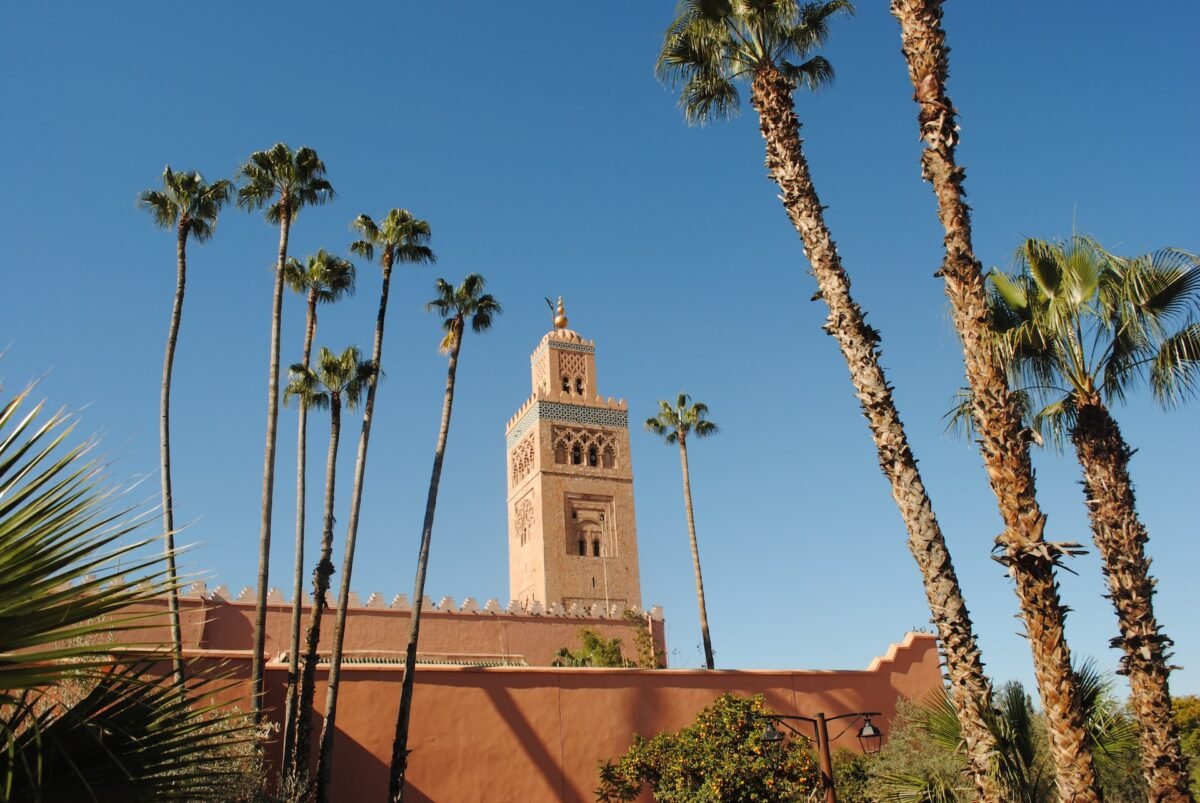
Hopefully, you’re now ready to spend a wonderful week in Morocco. You’ll enjoy the fast-paced nature of Morocco’s largest cities, explore its cultural heritage, and spend time admiring the country’s natural beauty. Even if you veer from this itinerary, you’ll have a memorable visit to this beautiful country.
If you’re looking for more to do while in Morocco, see our guide to the 10 Best Places to Visit in Morocco. For even more adventures, check out the rest of our guides to travel in Africa.










